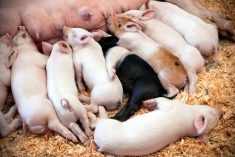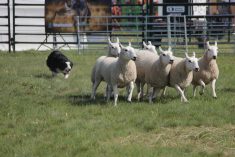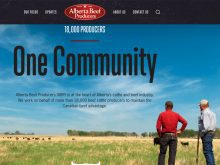Alberta’s agriculture minister and board members of the meat and livestock agency are travelling to Asia this month with one question of potential customers.
What will it take to start selling beef in Japan and South Korea, where regulations and BSE trade embargoes knocked Canada to its knees with little sign of recovery?
People can continue to preach about the merits of science to prevent BSE, but they also need to give international clients what they want, said George Groeneveld at the Canada Beef Export Federation meeting in Calgary Sept. 18.
Read Also

Dennis Laycraft to be inducted into the Canadian Agricultural Hall of Fame
Dennis Laycraft, a champion for the beef industry, will be inducted into the Canadian Agricultural Hall of Fame this fall.
That trade mission might include lobbying Japan to raise the age limit for beef derived from cattle younger than 30 months rather than the 21 month cutoff.
Japan, South Korea and China are highly sensitive about food safety and have imposed strict import regulations including full traceability of food products. If they want full traceback, Alberta is willing to comply by enforcing mandatory age verification starting with the 2008 calf crop. Feedlots must report animal movement as of Jan. 1 to the Canadian Cattle Identification Agency within seven days.
The Alberta red meat strategy was announced in June and while the minister admits its direction is still unfolding, the time has come to respond before more processors are lost, the herd shrinks further and more producers leave the business.
Groeneveld also wants to build on the foundations of existing trade organizations like the export federation.
“We want to build on what they have done. We want to be a catalyst to get things going,” he said.
“We’ve had years where we are inching along. We are losing livestock numbers and we are down to two slaughterhouses in Alberta,” he said.
“We have to stop talking about this.”
Alberta’s position as a major livestock force in North America has been eroding since 2004, while world meat consumption is growing.
In 2002, Alberta beef and live cattle exports were worth $2.3 billion. By 2006, they fell to $1.6 billion after three years of living with BSE trade suspensions.
“The Canadian and Albertan beef industry have been the victims of some pretty unjustified market access restrictions brought into play by a number of countries determined to protect their own industries,” Groeneveld said.
The government also said it is willing to provide targeted investment to get back into more valuable markets.
Loans from Alberta are available for strategic investments to find new markets or develop a new way of doing business. The province is not going directly into the meat business.
“Those type of decisions will come from the agency board,” he said.
The board now has seven members with the addition of marketing consultants Hisakazu Hayakawa, Jeff Kroll and Kim McConnell. They join the existing board of Joe Makowecki and board members Ted Bilyea, Charlie Gracey and Kee Jim.
The strategy covers beef, pork, elk, bison and lamb.
Health a priority
Besides rebuilding trade, it is designed to support a strong animal health component by building better disease diagnosis capacity, genetic research and protection against foreign animal diseases. Higher standards of food safety will be demanded.
The strategy also supports further feed grain research and a cattle insurance program, and a regulatory review will be done within Alberta.















